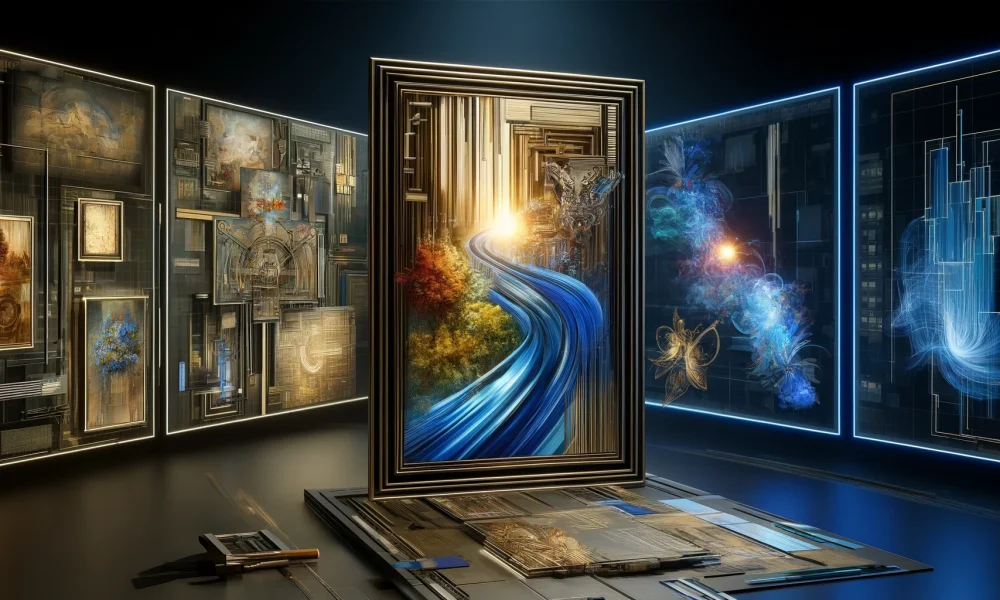Unveiling a New Era in Machine Learning and AI with Visual AutoRegressive Framework
With the rise of GPT models and other autoregressive large language models, a new era has emerged in the realms of machine learning and artificial intelligence. These models, known for their general intelligence and versatility, have paved the way towards achieving general artificial intelligence (AGI), despite facing challenges such as hallucinations. Central to the success of these models is their self-supervised learning strategy, which involves predicting the next token in a sequence—a simple yet effective approach that has proven to be incredibly powerful.
Recent advancements have showcased the success of these large autoregressive models, highlighting their scalability and generalizability. By adhering to scaling laws, researchers can predict the performance of larger models based on smaller ones, thereby optimizing resource allocation. Additionally, these models demonstrate the ability to adapt to diverse and unseen tasks through learning strategies like zero-shot, one-shot, and few-shot learning, showcasing their potential to learn from vast amounts of unlabeled data.
In this article, we delve into the Visual AutoRegressive (VAR) framework, a revolutionary pattern that redefines autoregressive learning for images. By employing a coarse-to-fine “next-resolution prediction” approach, the VAR framework enhances visual generative capabilities and generalizability. This framework enables GPT-style autoregressive models to outperform diffusion transfers in image generation—a significant milestone in the field of AI.
Experiments have shown that the VAR framework surpasses traditional autoregressive baselines and outperforms the Diffusion Transformer framework across various metrics, including data efficiency, image quality, scalability, and inference speed. Furthermore, scaling up Visual AutoRegressive models reveals power-law scaling laws akin to those observed in large language models, along with impressive zero-shot generalization abilities in downstream tasks such as editing, in-painting, and out-painting.
Through a deep dive into the methodology and architecture of the VAR framework, we explore how this innovative approach revolutionizes autoregressive modeling for computer vision tasks. By shifting from next-token prediction to next-scale prediction, the VAR framework reimagines the order of images and achieves remarkable results in image synthesis.
Ultimately, the VAR framework makes significant contributions to the field by proposing a new visual generative framework, validating scaling laws for autoregressive models, and offering breakthrough performance in visual autoregressive modeling. By leveraging the principles of scaling laws and zero-shot generalization, the VAR framework sets new standards for image generation and showcases the immense potential of autoregressive models in pushing the boundaries of AI.
FAQs – Visual Autoregressive Modeling
1. What is Visual Autoregressive Modeling?
Visual Autoregressive Modeling is a technique used in machine learning for generating images by predicting the next pixel or feature based on the previous ones.
2. How does Next-Scale Prediction work in Image Generation?
Next-Scale Prediction in Image Generation involves predicting the pixel values at different scales of an image, starting from a coarse level and refining the details at each subsequent scale.
3. What are the advantages of using Visual Autoregressive Modeling in Image Generation?
- Ability to generate high-quality, realistic images
- Scalability for generating images of varying resolutions
- Efficiency in capturing long-range dependencies in images
4. How scalable is the Image Generation process using Visual Autoregressive Modeling?
The Image Generation process using Visual Autoregressive Modeling is highly scalable, allowing for the generation of images at different resolutions without sacrificing quality.
5. Can Visual Autoregressive Modeling be used in other areas besides Image Generation?
Yes, Visual Autoregressive Modeling can also be applied to tasks such as video generation, text generation, and audio generation, where the sequential nature of data can be leveraged for prediction.


No comment yet, add your voice below!